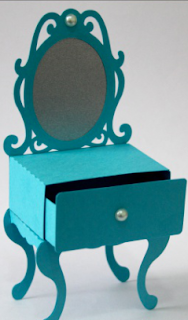Cute Furniture Mirror Design
A mirror (lat. Specullum) is a polished surface in which,
after impact, the light is reflected according to the laws of reflection.
The simplest is the flat mirror. In the latter, a beam of
parallel light rays can change direction completely together and remain a
parallel beam and can thus produce a virtual image of an object with the same
size and shape as the real. The image is right but reversed in the axis normal
to the mirror.
There are also curved mirrors which may be concave or
convex. A concave mirror whose surface forms a paraboloid of revolution, all
rays incident parallel to the axis of the mirror, are reflected through the
focus, and impinging through the focus, are reflected parallel to the axis.
Mirrors are objects that reflect most of the light that
strikes its surface due to this phenomenon we see our image in them. The
mirrors are actually behind crystals containing an aluminum layer (or other
material, but is easier aluminum).
Mirrors as toilet utensils and manual object were widely
used in the Egyptian, Greek, Etruscan and Roman. It was used in Jewish culture,
it was part of the source of metal that was at the entrance of the Tent of
Meeting. When washing the priests, they could see their imperfections (Exodus
38: 7-9; 30:18; written in approximately 1447 BC.).
Always elaborated with burnished metal, usually copper,
silver or bronze, this process is known as Plated. They were shaped round or
oval plate, usually decorated with engravings or mythological reliefs on the
back (the Romans lack engravings, but not relief) and with handle carved to
grab them comfortably; of them, they are still preserved many specimens in some
archaeological museums. During the Middle Ages, just use the mirror was made,
until the thirteenth century the manufacture of glass and rock crystal on metal
foil (or amalgam of lead or tin are the quicksilver mirrors) was invented,
while constructed so the only metal to the eighteenth century.
The mirror, as room furniture, start with the sixteenth
century, for although during the previous two centuries some historical
examples barely known and its use was unusual cited. In this century, it is
presented with elegant setting and artistic standing and occupies distinguished
place in the lounge as movable and compact object. By the end of the
seventeenth century Venetian mirrors are able to build factories large and
since then serve as singularly decorative objects in the rooms, which feature
prominently.
Modern mirrors consist of a thin layer of silver or aluminum
deposited on a glass plate, which protects the metal more durable and makes the
mirror. This process is known as silver.





0 comentarios:
Publicar un comentario